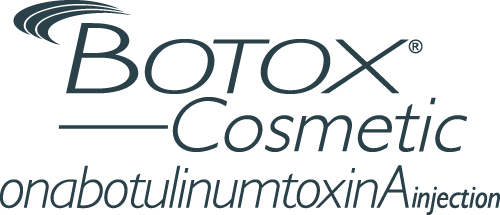In the ever-evolving field of cosmetic dermatology, dermal fillers have emerged as a revolutionary treatment, offering non-surgical solutions to combat the signs of aging and enhance facial aesthetics. Despite their popularity, many individuals considering dermal fillers are often overwhelmed by the plethora of information available and the nuances of different treatment options. This comprehensive guide aims to demystify dermal fillers, providing clear, evidence-based insights into their effects, duration, and overall benefits.
At Derrow Dermatology, established in 2008, we specialize in offering personalized, cutting-edge dermatological care in Central Florida. Our approach is rooted in compassion and expertise, ensuring that every patient receives tailored treatments that meet their unique needs. With this guide, we hope to equip you with the knowledge needed to make informed decisions about dermal fillers, ultimately enhancing your skin health and confidence. Whether you’re seeking to smooth wrinkles, restore volume, or simply learn more about this versatile treatment, our detailed exploration will provide the answers you need.
What Are Dermal Fillers?
Dermal fillers are injectable substances designed to restore volume, smooth lines and wrinkles, and enhance facial contours. These minimally invasive treatments have gained widespread popularity due to their ability to deliver immediate, natural-looking results without the need for surgery.
Types of Dermal Fillers:
- Hyaluronic Acid (HA) Fillers: Hyaluronic acid is a naturally occurring substance in the skin that retains moisture and contributes to a plump, hydrated appearance. Popular HA fillers include Juvederm, Restylane, and Belotero. These fillers are versatile and can be used in various areas of the face, such as the lips, cheeks, and under the eyes.
- Calcium Hydroxylapatite Fillers: Found in fillers like Radiesse, calcium hydroxylapatite is a mineral-like compound naturally found in human bones. It provides structure and stimulates collagen production, making it ideal for deeper wrinkles and volume loss.
- Poly-L-Lactic Acid Fillers: Sculptra is a well-known example of this type of filler. It works by stimulating collagen production over time, resulting in gradual and long-lasting improvements in facial volume and skin texture.
- Polymethylmethacrylate (PMMA) Fillers: Bellafill is a semi-permanent filler containing PMMA microspheres. These provide structural support and are typically used for deeper wrinkles and nasolabial folds.
How Dermal Fillers Work
Dermal fillers are injected beneath the skin’s surface to replenish lost volume and smooth out wrinkles. The procedure typically involves a topical anesthetic to minimize discomfort, and the results are often visible immediately. The longevity of the results varies depending on the type of filler used and the area treated, with some effects lasting from six months to two years or more.
Benefits of Dermal Fillers
Dermal fillers offer a multitude of benefits, making them a popular choice for individuals seeking non-surgical facial rejuvenation. These injectable treatments provide immediate results with minimal downtime, addressing various aesthetic concerns and enhancing overall facial harmony. Here are some of the key benefits of dermal fillers:
- Wrinkle Reduction: Dermal fillers smooth out fine lines and deeper wrinkles, restoring a youthful appearance.
- Volume Restoration: Fillers can replenish lost volume in areas such as the cheeks, temples, and under the eyes, giving a more youthful and vibrant look.
- Lip Enhancement: They can enhance the shape, structure, and volume of the lips, providing a fuller and more defined appearance.
- Facial Contouring: Fillers can contour and enhance facial features, such as the chin, jawline, and cheeks, creating a more balanced and aesthetically pleasing profile.
- Non-Surgical and Minimally Invasive: As a non-surgical option, dermal fillers involve minimal discomfort and recovery time compared to surgical procedures.
- Immediate Results: Patients can see immediate improvements post-treatment, with continued benefits as the fillers settle and integrate with the skin.
- Customization: Treatments can be tailored to meet individual aesthetic goals, providing natural-looking results that enhance personal features.
- Stimulation of Collagen Production: Some fillers stimulate the body’s natural collagen production, improving skin texture and elasticity over time.
These benefits make dermal fillers a versatile and effective solution for those looking to enhance their appearance and combat the signs of aging without undergoing surgery.
How Dermal Fillers Work
Dermal fillers work by injecting a gel-like substance beneath the skin to add volume, smooth wrinkles, and enhance facial contours. The procedure typically begins with a consultation to assess the patient’s goals and determine the appropriate type and amount of filler needed. Here’s a step-by-step overview of how dermal fillers achieve their effects:
- Preparation: The treatment area is cleansed, and a topical anesthetic is applied to minimize discomfort during the injection process.
- Injection: Using a fine needle or cannula, the dermatologist carefully injects the filler into specific areas of the face. The depth and location of the injections depend on the desired outcome and the type of filler used.
- Volumizing: Once injected, the filler immediately adds volume to the targeted area, lifting the skin and smoothing out wrinkles and fine lines.
- Collagen Stimulation: Certain fillers, like those containing poly-L-lactic acid or calcium hydroxylapatite, also stimulate the body’s natural collagen production. This not only enhances the immediate effects but also improves skin texture and elasticity over time.
- Integration: The filler integrates with the skin tissue, providing a natural look and feel. The results are often visible right after the procedure, with further improvement as any initial swelling subsides.
Procedure Overview
The process of receiving dermal fillers is straightforward and typically involves minimal downtime, making it an attractive option for those seeking quick, non-surgical cosmetic enhancement. Here’s an overview of what to expect during the procedure:
- Consultation: The journey begins with a thorough consultation with a dermatologist or qualified medical professional. During this session, the patient’s aesthetic goals, medical history, and skin condition are assessed. This helps in selecting the most appropriate type of filler and developing a personalized treatment plan.
- Preparation: On the day of the procedure, the treatment area is cleansed to prevent infection. A topical anesthetic or numbing cream is applied to minimize any discomfort during the injection process.
- Injection: The dermatologist uses a fine needle or cannula to inject the filler into the targeted areas. The depth and technique of injection vary based on the desired outcome and the type of filler used. The process typically takes between 15 to 60 minutes, depending on the number of areas being treated.
- Post-Injection Care: After the injections, the treated areas may be gently massaged to ensure even distribution of the filler. Patients are provided with aftercare instructions, which may include avoiding strenuous activities, excessive sun exposure, and not touching the treated areas for a specified period.
- Recovery: Most patients experience minimal downtime and can return to their normal activities almost immediately. Some may experience mild swelling, redness, or bruising at the injection sites, which typically resolves within a few days.
Duration of Dermal Filler Effects
The longevity of dermal filler results can vary significantly based on the type of filler used, the treatment area, and individual patient factors such as metabolism and lifestyle. Here’s a detailed look at the duration of effects for different types of dermal fillers:
- Hyaluronic Acid (HA) Fillers: These are among the most commonly used fillers, with popular brands including Juvederm and Restylane. The effects of HA fillers typically last between 6 to 18 months. Over time, the body gradually absorbs the hyaluronic acid, necessitating follow-up treatments to maintain results.
- Calcium Hydroxylapatite Fillers: Products like Radiesse utilize this type of filler, which can last up to 12 months or longer. These fillers not only provide immediate volume but also stimulate collagen production, which helps in extending the duration of the results.
- Poly-L-Lactic Acid Fillers: Sculptra is a notable example of this filler, which works by stimulating collagen growth over time. The results of Sculptra are gradual, appearing over several months and typically lasting up to 2 years as new collagen forms and supports the skin structure.
- Polymethylmethacrylate (PMMA) Fillers: Bellafill is a semi-permanent filler containing PMMA microspheres. The effects can last up to 5 years, making it a long-term solution for deep wrinkles and significant volume loss.
Factors such as the patient’s age, skin type, and lifestyle (e.g., smoking, sun exposure) can also impact the duration of dermal filler effects. Regular maintenance treatments and following post-procedure care instructions can help prolong the benefits of dermal fillers, ensuring sustained and satisfactory results.
Potential Risks and Side Effects
While dermal fillers are generally safe when administered by a qualified professional, there are potential risks and side effects that patients should be aware of. Common side effects include temporary redness, swelling, and bruising at the injection site, which usually subside within a few days. Some patients may experience tenderness or slight discomfort, but these symptoms are typically mild and short-lived.
In rare cases, more serious complications can occur. These include allergic reactions, infection, and lumps or nodules forming under the skin. Vascular complications, such as accidental injection into a blood vessel, can lead to tissue damage and require immediate medical attention. Additionally, incorrect placement of fillers can result in asymmetry or undesirable aesthetic outcomes.
To minimize these risks, it is crucial to choose a board-certified dermatologist or an experienced medical professional who follows proper hygiene and injection techniques. Pre-treatment consultation and following post-procedure care instructions are also essential steps in ensuring a safe and effective dermal filler treatment.
Who Is a Good Candidate for Dermal Fillers?
A good candidate for dermal fillers is someone looking to address signs of aging, such as fine lines, wrinkles, and volume loss, without undergoing invasive surgery. Ideal candidates are typically in good overall health, with realistic expectations about the outcomes of the procedure. Dermal fillers are suitable for individuals with mild to moderate skin laxity who desire a more youthful appearance and enhanced facial contours.
Candidates should not have active skin infections or inflammation in the treatment areas. It is also important for potential patients to disclose their full medical history, including any allergies or previous adverse reactions to dermal fillers. Pregnant or breastfeeding women are generally advised to postpone treatment until after these periods.
Patients considering dermal fillers should have specific aesthetic goals, whether it’s enhancing lip volume, softening nasolabial folds, or contouring the cheeks and jawline. Consulting with a qualified dermatologist can help determine the most appropriate type of filler and treatment plan to achieve the desired results. This ensures a personalized approach, maximizing safety and effectiveness.
Conclusion
Dermal fillers offer a versatile and effective solution for individuals seeking to rejuvenate their appearance without the need for invasive surgery. With the ability to smooth wrinkles, restore lost volume, and enhance facial contours, these treatments provide immediate and natural-looking results that can significantly boost confidence and self-esteem. Understanding the different types of fillers, their benefits, how they work, and the potential risks involved can help you make informed decisions about your cosmetic goals.
At Derrow Dermatology, we are dedicated to providing personalized, high-quality care tailored to meet the unique needs of each patient. Our experienced team, led by Dr. Amy Witt, ensures that every treatment is performed with precision and expertise, utilizing the latest advancements in dermatological technology.
Experience the compassionate, expert care that has made Derrow Dermatology a trusted name in Central Florida since 2008. Contact Us Today!









